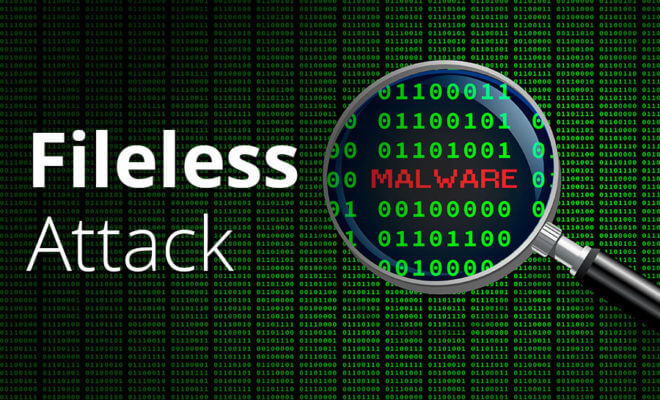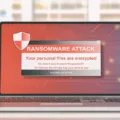In recent years, cybercriminals have been increasingly turning to file-less malware to carry out their malicious activities. Fileless viruses are a type of malicious code that doesn’t need to install or download any software onto a victim’s device. Instead, these viruses take advantage of existing vulnerabilities in software and services on the device to gain access and carry out their attack.
Despite being more difficult to detect, fileless virus threats are still a major concern for security teams across all industries. The reason for this is that these viruses don’t leave behind any physical evidence on the hard drive; making them harder to spot and harder to track down. To make matters worse, fileless virus attacks have become increasingly sophisticated and can be used to gain access to sensitive data such as financial information or confidential documents.
So how can security teams protect themselves from fileless virus threats? The best way is through memory analysis – an advanced technique used by security experts that help identify the presence of fileless malware, recover valuable intelligence about its deployment, and determine the damage caused. By analyzing the code running in memory, security teams can identify malicious processes that may be present on a system before they cause any damage.
It’s also important for businesses and organizations to take proactive steps toward prevention by regularly patching their systems and updating software. This will help reduce the number of vulnerabilities available for hackers to exploit and make it much more difficult for them to gain access through fileless virus attacks.
Fileless virus threats may be hard to detect but with the right precautions in place, organizations can keep their systems secure from these malicious attacks. Memory analysis is a key tool for identifying these types of threats – allowing security teams to quickly respond and limit any potential damage caused by an attack.

The Dangers of Fileless Threats
Fileless threats are malicious programs that do not store their code on the user’s computer or device but instead execute themselves in memory. The threat may be delivered via email attachments, links to malicious websites, or by exploiting vulnerable software on the user’s machine. Once the threat has been activated, it can then carry out a range of malicious activities such as data theft, account takeovers, and credential harvesting. Fileless threats are particularly difficult to detect as they don’t leave any traces of their presence on the system. Traditional security solutions are designed to detect known malware based on signature matching and heuristics – techniques that are not always effective against fileless threats which can rapidly mutate and adapt to evade detection. Advanced protection technologies such as behavior-based detection and critical area scanning are needed to effectively identify and mitigate fileless threats.
Detecting Fileless Malware
Yes, it is possible to detect fileless malware. Memory analysis is one of the most effective methods for detecting and confirming the presence of fileless threats. Memory analysis allows security teams to identify malicious code running in memory, which can be used to uncover information about how the malware was deployed and the damage it has caused. By analyzing memory dumps, security teams can look for signs of malicious activity, including malicious files and code fragments that may have been injected into system memory without being stored on a disk. Additionally, certain types of fileless malware are designed to evade detection by leaving no traces on disk, so using memory analysis is essential for identifying these types of threats.
Example of a Fileless Virus
Fileless malware, also known as non-malware or fileless viruses, is a type of malicious software that does not rely on files to execute its malicious activities. Instead, it uses existing system resources and tools to run its code and achieve its objectives. Examples of fileless malware include SamSam ransomware and Operation Cobalt Kitty.
SamSam ransomware is a particularly destructive form of ransomware that works by exploiting vulnerable systems through remote access tools like RDP or SSH. It then uses PowerShell scripts to download the malicious payload which allows it to identify vulnerable machines and encrypt their files without ever needing to be written to disk.
Operation Cobalt Kitty is a sophisticated cyber attack campaign that leveraged fileless malware techniques in order to deploy malicious code on targeted networks without leaving any traces behind. The attackers used PowerShell scripts embedded in legitimate Windows processes to deliver the malicious code directly into memory, making it difficult for traditional security solutions to detect the attack. Once deployed, the code was able to exfiltrate data and cause other damage without ever being stored on disk.
Where Does Fileless Malware Reside?
Fileless malware, also known as memory-resident malware, is a type of malicious software that does not rely on files to execute its malicious code. Instead, it resides in volatile areas of the system such as the system registry, memory processes, and service areas.
In order to live in these areas, fileless malware takes advantage of legitimate programs or processes that are already running on a computer. It can be injected into existing processes through techniques such as process hollowing or reflective loading and executed without ever being written to disk. This makes it difficult to detect using traditional anti-virus and security solutions since it does not leave any traceable files on the system.
Once inside the computer’s memory, fileless malware can perform many malicious activities such as stealing data, downloading additional malicious components, disabling security measures, redirecting web traffic, and more. As with other types of malware, fileless malware is constantly evolving to evade detection by security solutions. Therefore, organizations need to implement robust security solutions that can detect and mitigate fileless threats before they cause damage.
Does Malwarebytes Detect Fileless Malware?
Yes, Malwarebytes can detect and remove fileless malware, including Trojan. Fileless. MTGen, without any further user interaction. Malwarebytes utilizes advanced technology to detect and block malicious code, even before it has been written to disk. This includes fileless malware that runs directly in memory or within an application’s data, making them difficult to detect using traditional antivirus tools. Malwarebytes is able to identify these threats and remove them before they cause damage to your system.
Can Viruses Hide in Random Access Memory (RAM)?
Yes, viruses can hide in RAM. Resident viruses are particularly problematic because they can remain undetected by traditional antivirus and antimalware software. These types of malicious programs become active when the operating system (OS) loads a specific application or service, and they stay in the computer’s random access memory (RAM) until the OS is restarted. Even if the original virus is deleted, its version stored in RAM can still be activated when certain applications are loaded. To prevent resident viruses from hiding in RAM and infecting your computer, it is important to keep your OS up to date and use reliable antivirus software that can detect any suspicious activity.
Detecting Fileless Malware: A Challenge
Fileless malware is hard to detect because it does not rely on standard, file-based techniques used by many endpoint security solutions. Instead, it is designed to exist and run entirely within the system’s memory without leaving any trace on the disk or in the file system. This means that the malicious code is not visible to traditional anti-virus scans, as they are unable to scan into the memory of a running process. Additionally, since fileless malware often uses legitimate Windows commands (such as PowerShell) and functions, they can be difficult to distinguish from normal system operations. Furthermore, since malicious code embedded within a running process can easily be hidden or encrypted, these techniques also help fileless malware evade detection. Finally, some malicious processes may be configured to delete themselves after completing their task, making them even harder to detect.
Can Fileless Malware be Detected by EDR?
Yes, EDR can detect fileless malware. This is because EDR relies on behavior analysis rather than signatures, which makes it capable of detecting novel and process-based attacks. Fileless malware operates in memory and doesn’t write files to disk, so it is undetectable by antivirus software. However, due to its behavior-based nature, EDR can identify processes run by this type of malware and alert the user accordingly.
The Difference Between File-Based and Fileless Viruses
A file-based virus is an executable file that is designed to maliciously alter or delete data on a computer. These viruses are typically spread via email, downloads, or by transferring infected files from one computer to another. Antivirus software can be used to detect and remove these types of viruses by scanning for particular signatures within the files.
Fileless malware, on the other hand, does not rely on executable files to carry out malicious activities. Instead, it takes advantage of tools built into the Windows operating system to carry out attacks. Fileless attacks are difficult for antivirus software to detect because they do not create any recognizable signature that can be scanned for. This type of malware often targets specific users or organizations and relies heavily on social engineering tactics in order to spread.
The Impact of Fileless Malware
The impact of fileless malware can be far-reaching and devastating. It is difficult to detect and can cause a great deal of damage to networks, systems, and data. Fileless malware is designed to exploit vulnerabilities in applications or operating systems, allowing attackers to gain access to a computer system without the need for malicious files. Once on the system, attackers can steal confidential data, install additional malicious software, and create backdoors for further access. Fileless malware can also lead to serious financial losses due to unauthorized transactions or payments being made from compromised accounts. In addition, it can cause reputational damage when confidential information is exposed or leaked online. Overall, fileless malware can be incredibly damaging and should always be taken seriously by organizations.
Conclusion
In conclusion, fileless malware is a growing threat that is difficult for traditional security measures to detect and protect against. By taking advantage of existing vulnerabilities in installed software, fileless malware can easily access a device and cause damage. The only way to detect and confirm the presence of fileless threats is through memory analysis, which allows security teams to identify the malicious code in memory and take appropriate action. To mitigate the risk posed by fileless malware, it is important to have strong security measures in place that can detect suspicious activities and protect against potential attacks.








